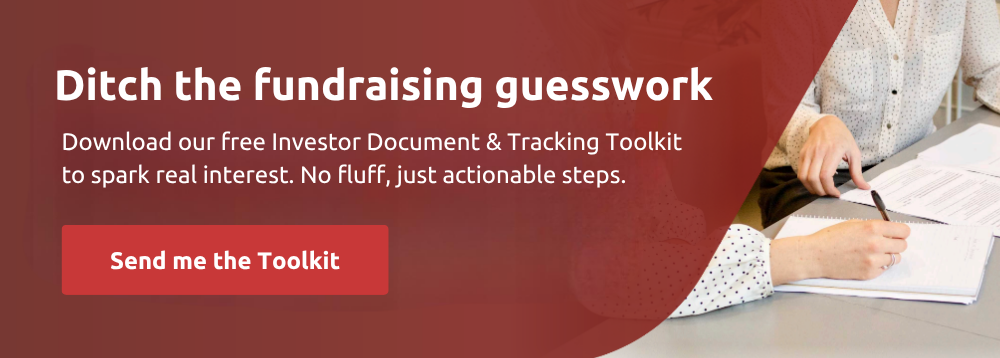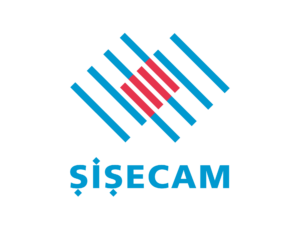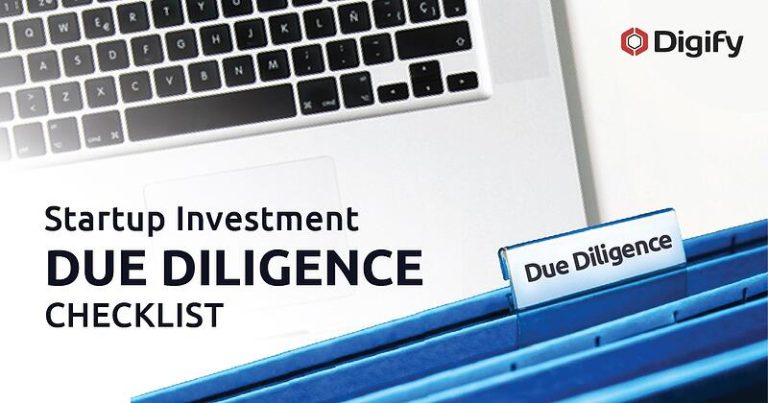This article is part of The Complete Guide to Raising Funds from LPs. The guide covers everything from defining your investment thesis and building strategic fundraising plans to mastering investor due diligence and navigating emerging trends like AI and ESG integration.
Each chapter builds on the previous ones to give you a complete fundraising playbook. While the article below is very informative, you’ll get the most value by reading the entire guide to see how you can fast-track your fundraising process.
With your investment thesis, unique selling proposition, and fund structure established, the next critical phase is developing a comprehensive fundraising plan. This strategic roadmap transforms your foundational elements into actionable steps for attracting and securing investor commitments.
The current fundraising environment presents formidable challenges. According to McKinsey’s Global Private Markets Report 2025, fundraising declined for the third consecutive year in 2024, decreasing by 24% year over year to $589 billion globally. Venture capital has been particularly affected, with fundraising plummeting to $104.7 billion worldwide in 2024 – an 18% decrease from 2023 and the lowest level in six years.
These statistics highlight the intensified competition for capital and heightened investor scrutiny. Funds now require an average of 21.9 months to close; a significant increase from 19.6 months in 2023 and 14.1 months in 2018. Success in this challenging environment demands a sophisticated, methodical approach to fundraising.
Setting Strategic Fundraising Objectives
Your fundraising strategy must begin with clearly defined objectives that translate your fund’s vision into quantifiable targets and timelines.
While your investment thesis and USP provide the qualitative foundation for your fundraise, your target size must be defensible based on your deployment capacity, team resources, and realistic assessment of investor appetite.
Timeline planning has also become increasingly critical as fundraising cycles extend. Your fundraising plan must account for the extended duration of modern fundraising, with appropriate staging of investor outreach, due diligence support, and closing processes. This elongated timeline has significant implications for operating capital requirements, team bandwidth allocation, and milestone management.
When defining these objectives, consider specific, quantifiable metrics. For instance, targets might include securing 30% of the target fund size within the first six months, achieving a first close of $X million by Q3, or engaging with at least 150 qualified institutional investors. Timelines should be broken down into phases, such as a 3-month pre-marketing phase, a 6-9 month active fundraising period, and a 3-6 month final closing window. Best practice dictates building in buffer time for unexpected delays, setting realistic interim milestones, and regularly assessing progress against these benchmarks.
It’s also crucial to distinguish between various fund size objectives:
- Target Fund Size: This is the ideal amount of capital the fund aims to raise, balancing deployment capacity with market opportunity and investor appetite. It’s the headline figure presented to potential LPs.
- Fund Cap (or Hard Cap): This represents the absolute maximum amount of capital the fund is legally and strategically willing to accept. Exceeding this limit could dilute the investment strategy or overstretch the management team’s capacity, making it a critical ceiling for LPs.
- Minimum Fund Size (or First Close Target): This is the threshold amount of capital required for the fund to officially launch and begin making investments. It ensures the fund has sufficient scale to execute its strategy effectively and is a key prerequisite for the fund to draw down committed capital from investors.
Cherry Bekaert’s 2025 Private Equity Report notes: “It took the average fund more than 16.2 months to close a fund through the end of 2024, up from 13.8 months in 2023 and 11 months in 2022, a trend that has persisted over the past few cycles.” This confirms that even well-prepared managers must plan for extended fundraising periods.
Investor Mapping and Segmentation
Your fundraising plan must include sophisticated investor targeting that aligns your offering with the right capital sources.
The investor landscape for private markets continues to evolve in significant ways. Institutional investors, traditionally the backbone of private equity fundraising, face mounting challenges. Many are over-allocated to private equity relative to their target allocations, primarily due to the “denominator effect” from public market volatility. According to S&P Global Market Intelligence, “Liquidity has been an issue that has disrupted the cycle of raising capital, investing and exiting… the money just doesn’t get back to LPs as quickly, and that has a knock-on effect on how much those LPs can put into new funds.”
Family offices and HNWI also represent an increasingly important investor segment, often operating with different constraints than institutions. Cambridge Associates noted in their 2025 Outlook that individual investors through various platforms represent a growing potential capital source that could “drive an overwhelming amount of capital into the space.”
Strategic investor mapping requires developing detailed profiles of target investors that go beyond basic categorization. For each prospect category, document:
- Decision-making processes and typical due diligence requirements
- Investment parameters, including check sizes, holding periods, and liquidity expectations
- Past investments in comparable strategies, particularly noting repeated commitments
- ESG, impact, or thematic preferences that align with your approach
- Geographic or sector focuses that complement your strategy
Segmenting these investors by priority tiers allows for more efficient allocation of time and resources. Tier 1 prospects with the highest probability of investment and largest potential check sizes warrant the most concentrated attention. Tier 2 and 3 prospects can be approached through more scalable means while still receiving appropriate engagement.
Data Room Development and Management
With your investor segments defined, your data room becomes the central information repository supporting the due diligence process. A well-constructed data room serves as a persuasive extension of your investment narrative.
For strategic data room planning, you should establish basic organizational frameworks, determine what key information should be included, and develop your permission structure approach. Chapter 5 provides comprehensive guidance on implementing and leveraging data rooms throughout your fundraising process, including technical setup, security considerations, and recommended actions based on engagement signals and analytics.
Data room analytics and engagement signals can provide valuable strategic insights for your fundraising process, including which investors are engaging most deeply with your materials and which specific content areas are generating the most interest. These insights can help prioritize follow-up and refine your pitch for different investor segments.
Establishing a Phased Fundraising Timeline
With your data room in place, executing your fundraising requires a carefully orchestrated sequence of activities. A well-structured timeline provides the framework for this sequence and helps manage internal and external expectations.
The pre-marketing phase typically spans three to six months. This preparation phase is often underestimated, but thoroughness here prevents costly delays later.
The pre-marketing phase should include:
- Development of marketing materials that effectively communicate your investment thesis and USP
- Compliance review of all materials to ensure regulatory adherence
- Initial outreach to warm relationships and potential anchor investors
- Team preparation for investor meetings and due diligence questions
- Selection and onboarding of any external partners, such as placement agents
The active fundraising phase follows, now extending 12-18 months for most funds in the current environment. Your first close strategy typically targets achievement within 6-9 months from launch, aiming to secure 40-60% of your total fund size. This phase requires:
- Systematic investor outreach following your tiered prospect strategy
- Regular pitch meetings and ongoing due diligence support
- Consistent follow-up communications based on engagement analytics
- Interim updates on pipeline development or early investments
- Momentum-building through strategic anchor investor announcement
The final close and transition phase completes the fundraising cycle and shifts focus toward investment and portfolio management. This phase, lasting three to six months, includes:
- Final investor commitments and subscription documentation
- Legal closing procedures and capital call planning
- Onboarding of new investors into your communication systems
- Transition from fundraising to investor relations mode
Throughout each phase, clear internal milestones help measure progress and signal when adjustments to strategy may be required. External milestones, such as first close announcements, create momentum and validate your fund with prospective investors still in the pipeline.
Developing a Communication and Marketing Strategy
Your communication strategy bridges the gap between your investment thesis and investor commitment. It must translate the technical aspects of your strategy into compelling narratives tailored to different investor audiences.
Your pitch deck serves as the primary vehicle for initial engagement—it should be concise yet comprehensive, visually engaging, and clearly articulate your value proposition. The Private Placement Memorandum (PPM) provides more detailed disclosure while maintaining the narrative consistency established in your investment thesis.
Your communication plan should define:
- Key messaging points that consistently emphasize your differentiators
- Stakeholder-specific communications tailored to different investor segments
- Planned frequency and content of updates throughout the fundraising process
- Response protocols for common questions and due diligence requests
Digital presence has become increasingly important in fundraising. Your website and online profiles serve as extensions of your brand and are often the first touchpoints for potential investors conducting preliminary research. Ensure these channels reflect professionalism and quality.
Thought leadership content strategically aligned with your investment thesis can build credibility and demonstrate expertise. Articles, whitepapers, podcasts, or speaking engagements focused on your target sectors or strategies position your team as knowledgeable practitioners while reinforcing your unique perspective.
Building the Right External Partnerships
Successful fundraising often requires strategic external partnerships that extend your capabilities and reach.
Placement agents can significantly enhance your fundraising efforts under the right circumstances. They prove particularly valuable for first-time funds lacking established investor relationships, firms entering new geographies where local connections matter, or those attempting a significant scale-up in fund size. Selection criteria should include their track record with similar funds, relevant investor relationships, and appropriate fee structures that align incentives.
Your evaluation of placement agents should consider:
- Relevant experience with your specific strategy and target investor base
- Geographic coverage matching your fundraising ambitions
- References from other managers, particularly those at similar stages
- Fee structures aligned with your fundraising objectives and economics
- Cultural fit and communication style compatibility with your team
Fund formation counsel provides another critical external relationship, translating your fund structure concepts into legally sound documentation. Beyond mere documentation, experienced counsel can provide valuable guidance on terms that will resonate with your target investors while preserving appropriate economics and control.
Public relations firms can sometimes play a valuable role in building market awareness and credibility, particularly for emerging managers. Strategic media placements and thought leadership pieces help establish visibility with potential investors before direct outreach begins.
Implementing Technology Solutions
The right technology infrastructure streamlines your fundraising process while enhancing the investor experience.
Virtual data room platforms form the technological backbone of modern fundraising. Select a secure, user-friendly platform designed specifically for private equity fundraising rather than generic file-sharing tools. The right platform enables controlled information sharing while maintaining security and providing valuable analytics on investor engagement.
Your technology selection should consider:
- Security features, including encryption, access controls, and audit trails
- User experience for both your team and prospective investors
- Analytics capabilities to track investor engagement and interests
- Integration with your other systems, such as customer relationship management (CRM) and reporting tools
- Scalability to accommodate growing document volumes and user numbers
“We like to keep our confidential documents close to the chest. With Digify, we are always in control of who has access and who doesn't."
- Jonathan Dunlop, General Counsel at Vidyard
CRM systems help track investor interactions and relationship development systematically. The fundraising process involves hundreds or even thousands of touchpoints across dozens or hundreds of prospects—without proper tracking, critical opportunities can easily slip through the cracks.
Reporting tools that prepare professional, consistent materials for prospective investors enhance your credibility. The ability to generate customized reports efficiently becomes increasingly valuable as your investor base grows more diverse in its information requirements.
Executing a Strategic First Close
Building on the credibility established through your investment thesis and USP, the first close represents a pivotal milestone in your fundraising journey. A strategic approach to this milestone can significantly impact your overall success.
Aim to secure 40-60% of your total fund size for the first close. This threshold demonstrates sufficient market validation to attract additional investors while leaving room for meaningful participation in subsequent closes. Identify potential anchor investors early in your process—these cornerstone supporters provide credibility that can influence other prospects’ decisions. Institutional investors with strong reputations, particularly those known for thorough due diligence, can serve as powerful validators.
Consider offering appropriate incentives for first close participants that don’t compromise your established fund structure or economics. Options might include:
- Limited fee discounts that preserve the overall fund economics
- Preferred access to co-investment opportunities alongside the fund
- Enhanced reporting or communication access
- Advisory board positions for significant commitments
Your first close announcement strategy should be carefully planned to create market momentum. Media coverage can generate inbound interest and provide a natural conversation starter with prospects already in your pipeline. Ensure your messaging emphasizes both the quality of your investor base and your progress toward overall targets.
Navigating Market Dynamics and Adaptability
The private equity fundraising environment continues to evolve, with concentration increasingly favoring established managers.
According to PitchBook’s Q1 2024 Global Private Market Fundraising Report, “Private market fundraising is becoming increasingly concentrated among blue-chip players… with the majority of capital raised going to managers with funds valued above $1 billion.” This concentration creates particular challenges for emerging managers, who must work harder to demonstrate their unique value proposition and ability to generate differentiated returns.
Your fundraising plan must include mechanisms for regular reassessment and adaptation. Quarterly reviews of your fundraising progress, investor feedback patterns, and market conditions allow for timely adjustments to your approach. These reviews should evaluate:
- Progress against timeline milestones and fundraising targets
- Effectiveness of messaging and materials based on investor responses
- Pipeline development and conversion rates at each stage
- Resource allocation and team effectiveness
- Competitive landscape changes and emerging market trends
Adaptability does not mean abandoning your core investment thesis or compromising your fund structure. Rather, it means refining your communication approach, adjusting timelines, reallocating resources, or enhancing your materials based on market feedback while maintaining consistency in your fundamental strategy.
Your fundraising plan provides the operational roadmap for successfully raising capital in today’s challenging environment. By methodically addressing investor targeting, data room development, timeline planning, marketing strategy, external partnerships, technology implementation, first close execution, and market adaptability, you create a comprehensive approach that maximizes your probability of success.
When investors encounter consistent quality and attention to detail throughout their journey—from initial marketing materials to data room organization and subscription processes—their confidence in your ability to execute extends beyond fundraising to investment management.









